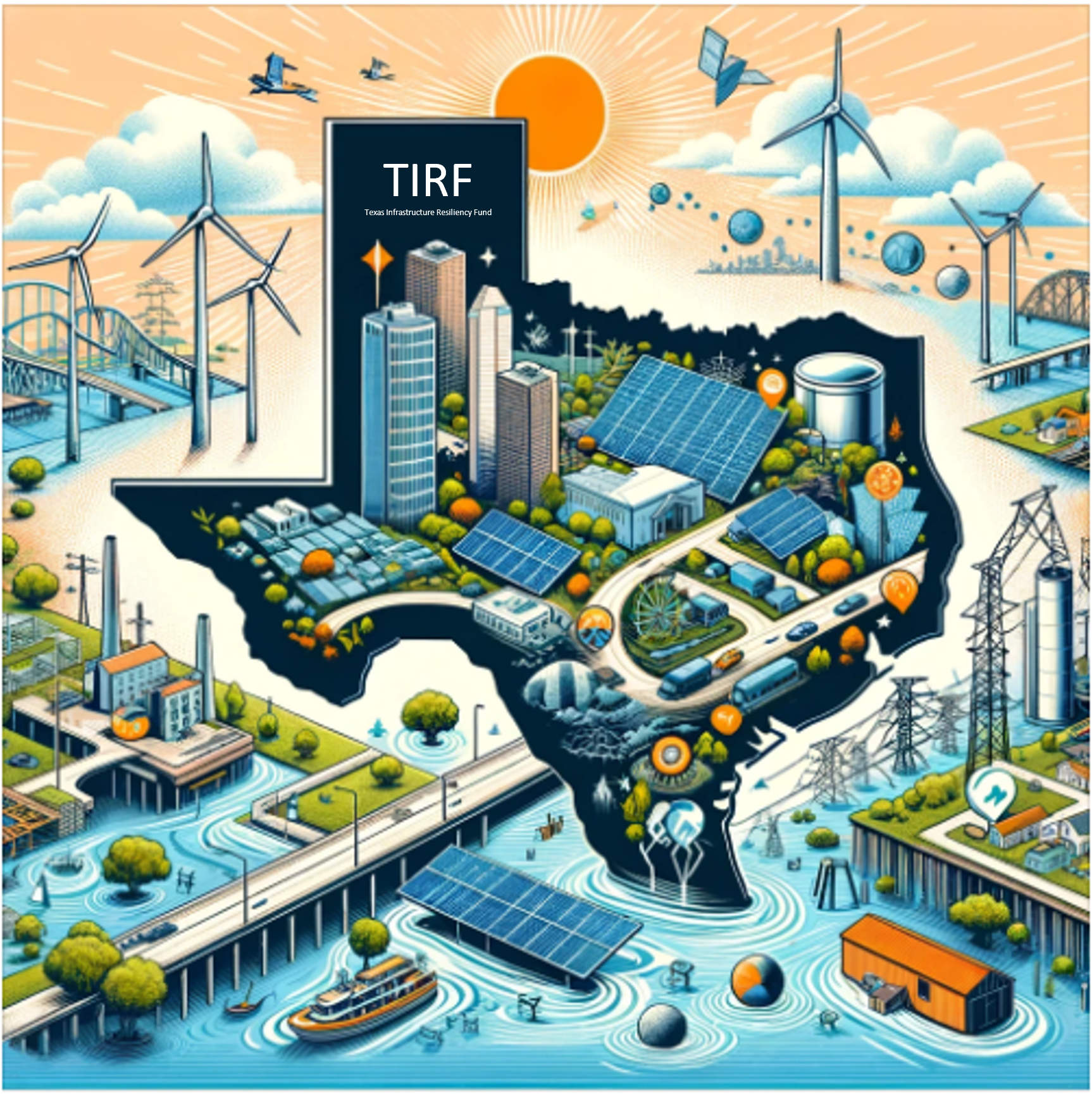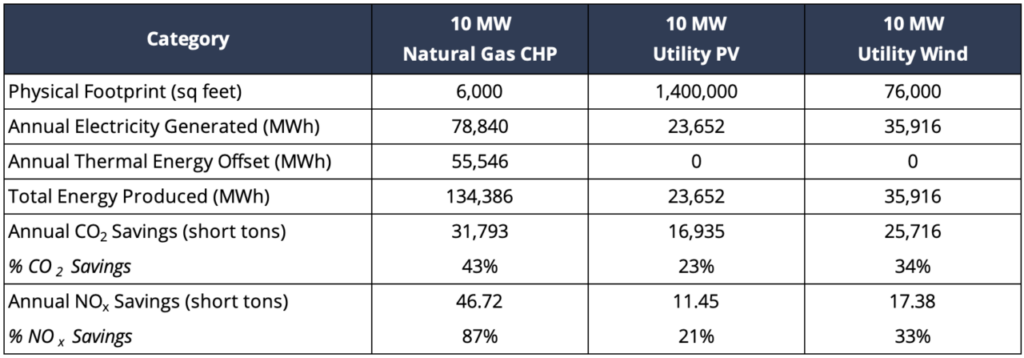Doing Your Part: Focus Carbon Neutrality Initiatives to Benefit Local Communities

For business leaders who are working to reduce their carbon footprint but do not have the acreage required for solar arrays nor the desire to simply buy credits from someone else, there are actionable options to achieve both emission reductions and immediate cost savings at your facility.
Buying credits to check a box as part of an abstract sustainability initiative is a strategy that is increasingly being viewed as both ineffective and insufficient. Being a good local steward means taking action at your facility to reduce emissions in your state, on your local grid, and for the local communities, you impact most. Choosing carbon-efficient generation options will have a greater impact on those local communities than waiting for the perfect “zero-carbon” solution to materialize at some point in the future.
On-site generation options, such as combined heat and power (CHP) systems, are primed to help communities make strides toward achieving carbon neutrality today. Furthermore, these systems will be able to transition to zero-carbon fuels such as renewable gas and hydrogen when they become more widely available.
Efficient Carbon Use Has Reduced U.S. Carbon Emissions for over 10 Years
The shift from coal-fired power to natural gas has been the most instrumental factor contributing to historical reductions in U.S. CO₂ emissions
CO₂ Emissions Reductions in Electricity Generation from Changes in Fuel Mix
Over the last 10 years, 61% of the U.S. energy sector’s reductions in CO₂ have been due to the shift from coal to natural gas generation. This holds true despite nearly two decades of heavy investment in renewable technologies and deployment.
Cogeneration uses carbon more efficiently than grid power plants by using waste heat on-site. ICF projects further substantial emission savings from CHP across the U.S. for the foreseeable future. In fact, a 20 MW gas-fueled CHP microgrid is projected to yield annual carbon savings that range from 10,000-90,000 tons of CO₂ in 2040, even as the nation’s grid gets “greener” through the installation of more renewables.
Additionally, cogeneration systems lay the groundwork for an easy transition to new, more efficient fuels and technologies down the line. At some facilities, CHP systems already incorporate biogas and hydrogen into their fuel supply, and as these new fuel sources continue to become affordable and abundant, more on-site cogeneration systems will be able to use them to generate reliable power using zero or near-zero carbon.
CHP Retains Emissions Reductions Even as Renewables Grow on the Grid
20 MW CHP Annual Emissions Savings vs Estimated Future Marginal Grid Emissions
Renewable-Only Initiatives Often Overlook Grid Transition Timelines and Local Impacts
Large-scale renewable generation requires substantial and complex infrastructure, often forcing renewable initiatives away from the local markets where the largest energy consumers reside.
Completely eliminating carbon as an energy source is unlikely to become a viable solution within the addressable (30-50 year) future. Despite the massive investment we have witnessed in the wind and solar technologies since the early 2000s, these two technologies collectively totaled just 9% of total grid energy production in 2019. Similarly, decades of efforts and resources spent shifting electricity generation away from coal have only reduced its share of grid production to 20%. Likewise, while sharing less than 1% of total grid generation, fuel oil — which has been actively phased out since the 1970s — is still used in more than 1,000 U.S. power generation facilities today.
Continuing to wait for years — or more likely, decades — for the zero-carbon grid to emerge is not a responsible strategy. With a focus on being a good steward in your local community, cogeneration enables the transition away from less-efficient sources and toward power generation solutions that significantly improve both energy efficiency and emission reductions. As has been proven with natural gas-based power generation on the grid, using a highly efficient on-site power generation system can push your facility further down the path of localized carbon neutrality.
Notes:
1. 10 MW Reciprocating Engine CHP – 44% electric efficiency, 75% total CHP efficiency
2. CHP thermal output displaces 85% efficient on-site natural gas boiler with 116.9 lb CO₂/MMBtu and 0.1 lb NOx/MMBtu emissions
3. CHP NOx emissions are reduced by 97% with selective catalytic reduction emissions controls
4. Capacity factors and efficiencies for utility PV and land-based wind power are based on NREL’s 2020 Annual Technology Baseline
5. CHP, PV and wind power displace the US-average non-baseload grid generation resource (eGRID 2018) – 1,432 lb CO₂/MWh, 0.968 lb NOx/MWh, 5.14% T&D losses
CHP Can Dramatically Reduce Carbon Emissions
Cogeneration-based microgrids help facilities cut emissions now — and are also compatible with future fuel sources like biogas and hydrogen.
Not only is natural gas expected to remain relevant as a fuel source for the next 30-50 years, but it is also actually expected to grow as a U.S. power generator beyond 2050. While natural gas does produce emissions, when used in a highly efficient CHP system it can significantly reduce a site’s existing carbon footprint. Most facilities experience a 30-40% carbon emissions reduction compared to grid power when switching to high-efficiency cogeneration systems. What’s more, CHP-based microgrids can be augmented with renewable solutions like carbon capture and sequestration (CCS) and can integrate with biogas or low-carbon “blue” hydrogen. Not only will facilities be producing cleaner on-site, but they will also be ready to transition when additional renewable fuel sources become viable — meaning CHP can continue to benefit local communities into the future.
Start Shaping Tomorrow’s Energy Landscape Today
There is no perfect solution to organically meet carbon neutrality expectations today. But progressive action is key: getting the ball rolling now will help make it easier to fully decarbonize as more efficient technologies and fuel sources become available. CHP power systems should be viewed as a useful tool to expedite your company’s carbon neutrality goals while benefiting local communities. Rather than purchasing more carbon credits, utilize highly efficient on-site energy solutions that provide resilient power at lower rates than the utility. Unison Energy designs, builds and operates microgrids for our clients, all without capital or operating expenses on your part.
Click here to contact Unison Energy and learn more about how using carbon more efficiently now sets you up for success in future decades.
Energy insights, delivered
Subscribe for more content.
Related Blogs

The Texas Infrastructure Resiliency Fund: Empowering Businesses with Onsite Microgrids
Deadlines for the Inflation Reduction Act
Canadian Carbon Reduction Incentives: What You Should Know


